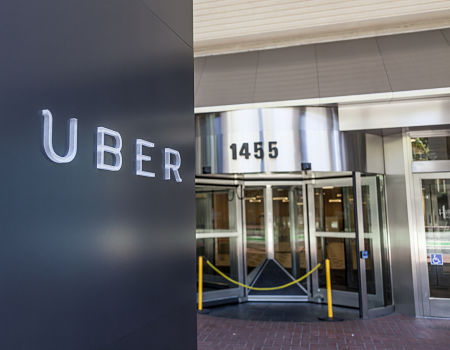Ride hail giant Uber has acknowledged using a technology trick to evade government regulators and has pledged to dismantle the feature, called “Greyball.”

Greyball collects in-app data to identify and target certain individuals, like law enforcement officers and government regulators. The technology was used to identify regulators posing as riders to collect evidence of wrong doing by the company.
“This program denies ride requests to fraudulent users who are violating our terms of service — whether that’s people aiming to physically harm drivers, competitors looking to disrupt our operations, or opponents who collude with officials on secret ‘stings’ meant to entrap drivers,” the company said in a statement.
The fake version of the Uber app made it appear cars were being summoned but never showed up.
A New York Times report uncovered the practice, which reportedly was used in Boston, Paris and Las Vegas, among other cities, as well as Australia, China, Italy and South Korea.
According to Uber, Greyball was used to identify violations to its user agreement that included harassing or threatening its drivers, according to the company. Uber has received criticism for its aggressive tactics and reputation for bending the rules.
Uber has made a practice of operating in cities without being authorized, forcing authorities to conduct sting operations to uncover the illegal activities. As part of those sting operations, police often make continuous attempts to hail Uber, which was how the Grayball technology targeted them.
Greyball also identifies unwanted users by checking their credit card information, social media profiles and other online information.
“Uber is an incredibly disruptive cyber technology,” said Kenneth Geers, former NSA analyst and senior research scientist for global cybersecurity firm Comodo. “So it’s not surprising that it also skirts the boundaries of legality.”
The San Francisco-based company didn’t seek permission when it launched its ride-hailing service in San Francisco in 2010.
The company was recently forced to halt an autonomous vehicle trial after the California Department of Motor Vehicles issued a cease and desist letter, informing the company it was not authorized to conduct those tests.
Uber CEO Travis Kalanick has said the company doesn’t need to beg for forgiveness.
“There’s been so much corruption and so much cronyism in the taxi industry and so much regulatory capture that if you ask for permission up front for something that’s already legal, you’ll never get it,” he told the Wall Street Journal.
Uber Chief Security Officer Joe Sullivan blogged on the topic.
“This technology is used to hide the standard city app view for individual riders, enabling Uber to show that same rider a different version. It’s been used for many purposes, for example: the testing of new features by employees; marketing promotions; fraud prevention; to protect our partners from physical harm; and to deter riders using the app in violation of our terms of service,” he said. “We have started a review of the different ways this technology has been used to date. In addition, we are expressly prohibiting its use to target action by local regulators going forward. Given the way our systems are configured, it will take some time to ensure this prohibition is fully enforced. We’ve had a number of organizations reach out for information and we will be working to respond to their inquiries once we have finished our review.”
